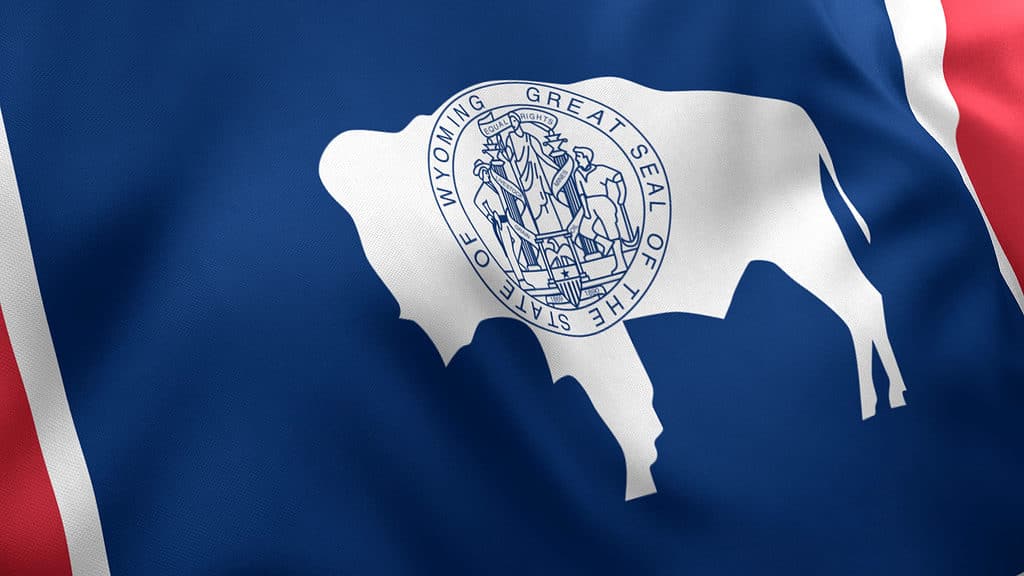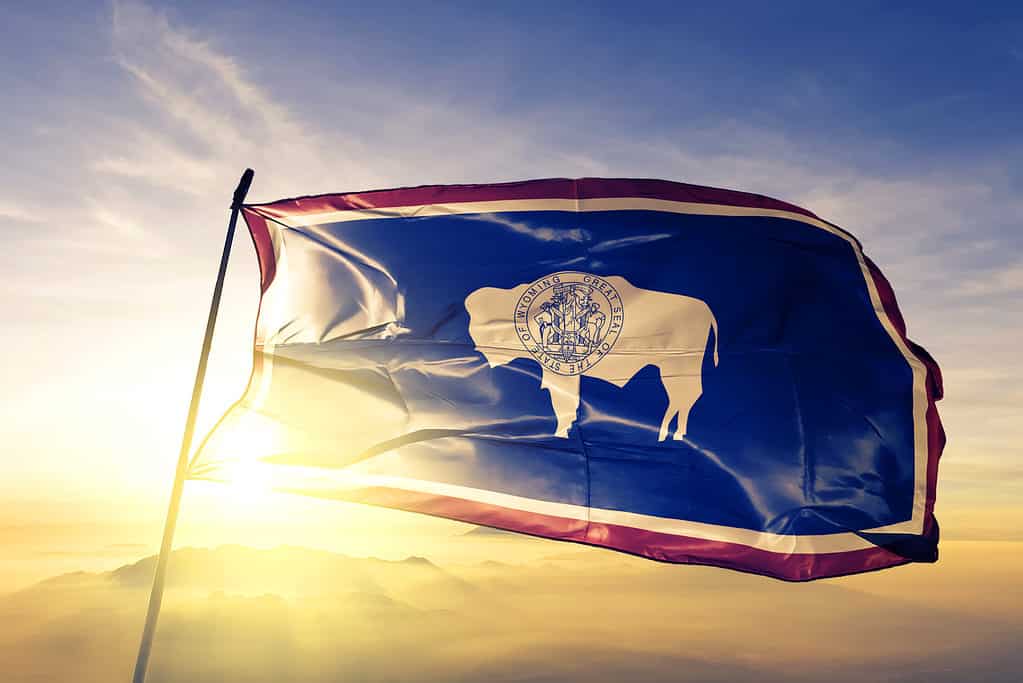Flags are much more than brightly colored symbols. They are used worldwide to represent countries, monarchies, and much more. Each US state is also represented by a flag and the design of them can vary widely. Some are bright and colorful like Arizona‘s flag, while others simply feature the state seal on a blue background. Although the flag of Wyoming has a blue field and the state seal, it is also one of several state flags to feature an animal on it. Why does Wyoming have an American bison on its flag though, and what does it represent? Let’s find out as we explore the history of the Wyoming state flag.
A Brief History of Wyoming
Wyoming was initially inhabited by Native American tribes for hundreds of years — particularly the Arapaho, Crow, Lakota, and Shoshone — until the European settlers arrived in the 17th century. The southern region of Wyoming was claimed by Spain. However, after Mexican independence in 1821, it became part of Alta California. In 1848, Mexico conceded the area to the US following the Mexican War. Wyoming first became a territory and then achieved statehood in 1890.
Although Wyoming is widely known for its vast open plains, it is also renowned for its forward thinking. In 1869 it became the first US territory to allow women to vote and have the same sort of rights as men. It became the first area to allow women to serve on juries in 1870. Wyoming even became the first state to have a female governor (elected in 1924). As it has long been one of the leading states for establishing the civil rights of women, it became known as “The Equality State”, from which the state motto “Equal Rights” is derived.

The flag of Wyoming was adopted in 1917 and features the American bison on it.
©iStock.com/mirza kadic
History of the Flag of Wyoming
21 US state flags feature an animal. However, of the two that have a bison on them, only the flag of Wyoming uses it as the main feature. The Wyoming flag was adopted on January 31, 1917. It consists of a dark blue field bordered by white and then red. In the center is a white silhouette of an American bison which bears the state seal in navy blue towards its shoulders.
In 1916, the Wyoming branch of the Daughters for American Revolution held a competition allowing the public to submit designs for the state flag. A total of 37 entries were received and the winning design was created by Verna Keys. Although the design was officially adopted as the state flag the following year, the flag originally featured the bison facing the opposite way — towards the fly. However, shortly afterward it was suggested that the design be changed. It was suggested that the bison face the hoist side — the way that animals are usually depicted on flags. Despite this, the change has never officially been adopted. This means that the current Wyoming flag is not the exact design that is featured in state legislation.
Symbolism and Meaning
Flags are often extremely symbolic, and the flag of Wyoming is no different. There are several pieces of symbolism that we can discuss it. There are three colors used on the flag — red, white, and blue. The most obvious symbolism is that they are the same colors that are used on the national flag. However, red can also represent the Native Indians in the state as well as the blood that the early pioneers shed. Also, blue symbolizes the sky and the mountains, while white represents purity and justice.
Next, the bison in the center of the flag represents the native animals in the state, especially the bison themselves as they originally roamed the plains in vast herds. As previously mentioned, the image was changed so that the bison was facing the hoist side. However, another reason for this is that it also symbolizes the way that animals stand and face the wind. Furthermore, the position of the state seal symbolizes the brand that is typically placed on livestock as a distinguishing mark.
State Seal
Finally, the state seal was adopted in 1893 and modified in 1921. The seal features a woman in the center. She is flanked by a miner and a cowboy — representing the agricultural and mining interests in the state. The woman holds a staff, from which comes a banner bearing the words, “Equal Rights” which is also the state motto. This symbolizes the political status of women in the state as women have been allowed equal voting rights and the ability to hold office since 1869.
To either side of the woman are two pillars with two scrolls surrounding each. The scrolls say, “Oils, mines, livestock, and grain” to symbolize the four main industries within the state. Below the woman is a shield with a five-pointed star on it. The star bears the number “44” which represents Wyoming having been the 44th state to join the Union. Lastly, the seal also features two dates — 1869 and 1890. These dates are highly significant to Wyoming. This is because they represent the dates upon which Wyoming first became an organized territory and then when it became a US state.

The colors on the state flag of Wyoming symbolize Native Indians in the state as well as the blood that the early pioneers shed. Blue symbolizes the sky and the mountains, while white represents purity and justice.
©iStock.com/Oleksii Liskonih
Up Next
- Every Flag in the World: Photos, History, and More
- Flag of Kansas: History, Meaning, and Symbolism
- Flag of Montana: History, Meaning, and Symbolism
The photo featured at the top of this post is © iStock.com/rarrarorro
Thank you for reading! Have some feedback for us? Contact the AZ Animals editorial team.







